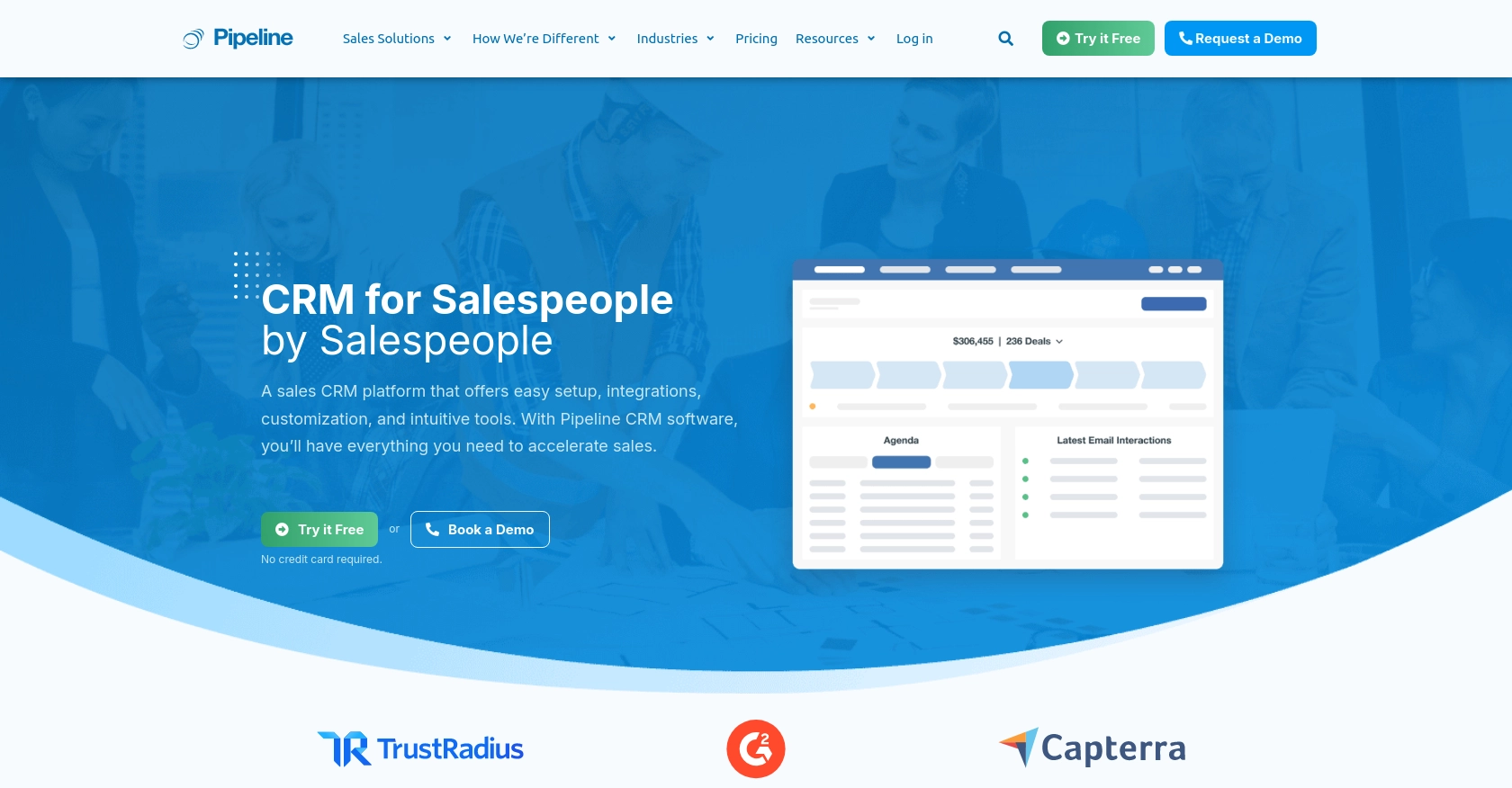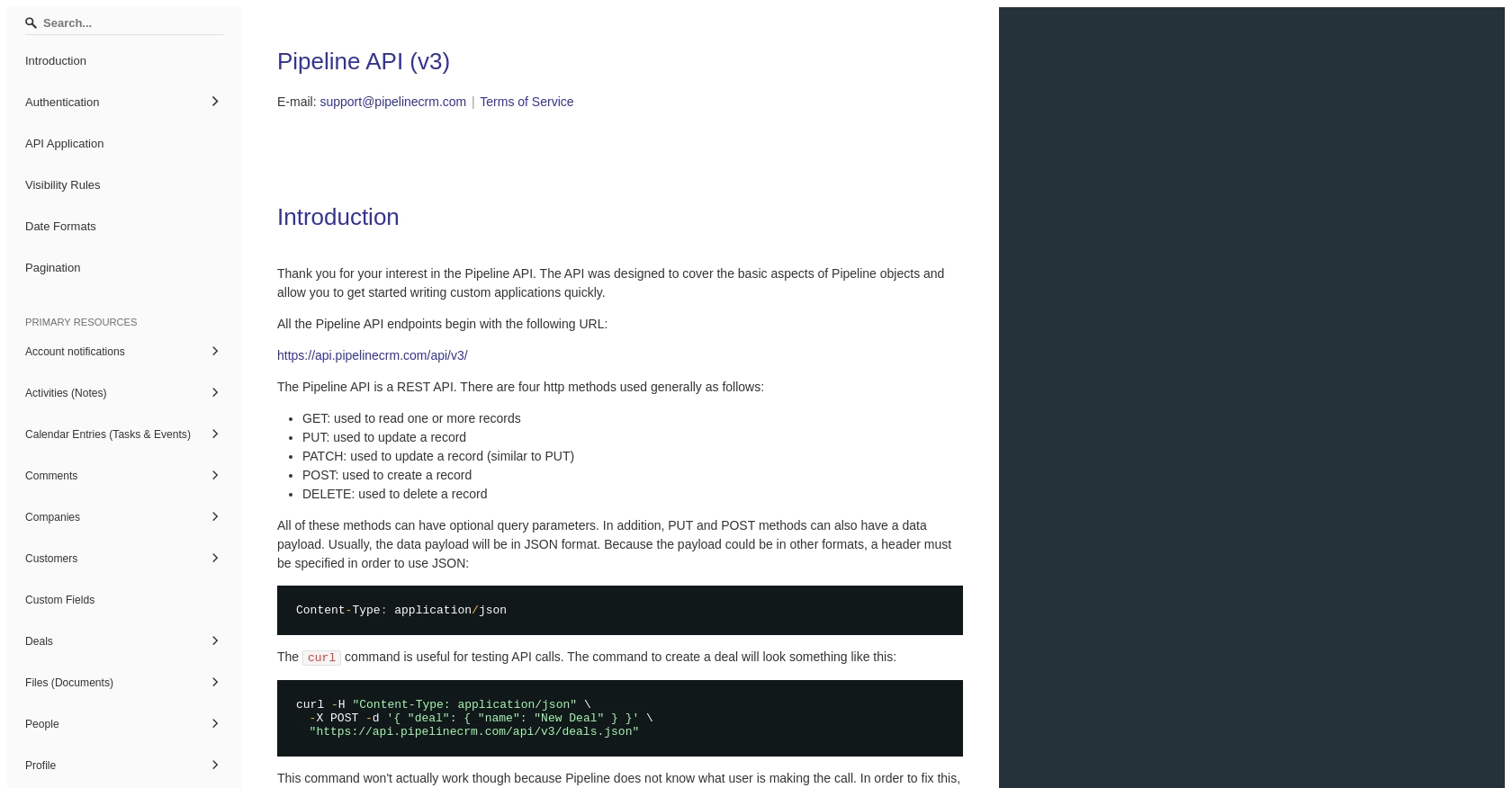Using the PipelineCRM API to Get Deals in Javascript

Introduction to PipelineCRM
PipelineCRM is a robust customer relationship management platform designed to help businesses manage their sales processes efficiently. With features like deal tracking, contact management, and sales forecasting, PipelineCRM empowers sales teams to close deals faster and improve customer interactions.
Integrating with the PipelineCRM API allows developers to automate and streamline sales operations. For example, by using the API to retrieve deal information, a developer can create custom dashboards that provide real-time insights into sales performance, helping teams make data-driven decisions.
Setting Up Your PipelineCRM Test Account
Before you can start interacting with the PipelineCRM API, you need to set up a test account. This will allow you to safely experiment with API calls without affecting live data.
Creating a PipelineCRM Account
If you don't already have a PipelineCRM account, you can sign up for a free trial on their website. This trial will give you access to the features you need to test the API.
- Visit the PipelineCRM website.
- Follow the instructions to create a new account.
- Once your account is set up, log in to access your dashboard.
Generating Your API Key for PipelineCRM
PipelineCRM uses API key-based authentication to secure API requests. Follow these steps to generate your API key:
- Log in to your PipelineCRM account.
- Navigate to the API settings section in your account dashboard.
- Click on "Generate API Key" to create a new key.
- Copy the generated API key and store it securely, as you will need it to authenticate your API requests.
With your API key ready, you can now proceed to make API calls to retrieve deal information using JavaScript. This setup ensures that your development environment is configured correctly to interact with PipelineCRM's API.

sbb-itb-96038d7
Making API Calls to Retrieve Deals from PipelineCRM Using JavaScript
To interact with the PipelineCRM API and retrieve deal information, you'll need to use JavaScript to make HTTP requests. This section will guide you through the process of setting up your environment and executing the necessary API calls.
Setting Up Your JavaScript Environment for PipelineCRM API
Before making API calls, ensure you have the following prerequisites:
- A modern web browser or a Node.js environment to run JavaScript code.
- An API key from your PipelineCRM account for authentication.
Installing Required Libraries for HTTP Requests
If you're using Node.js, you may want to install the axios library to simplify HTTP requests. Run the following command in your terminal:
npm install axiosExample Code to Retrieve Deals from PipelineCRM
Below is a sample JavaScript code snippet that demonstrates how to retrieve deals from PipelineCRM using the API key for authentication:
const axios = require('axios');
// Set the API endpoint and headers
const endpoint = 'https://api.pipelinecrm.com/api/v3/deals';
const headers = {
'Authorization': 'Bearer YOUR_API_KEY',
'Content-Type': 'application/json'
};
// Function to get deals
async function getDeals() {
try {
const response = await axios.get(endpoint, { headers });
const deals = response.data;
console.log('Retrieved Deals:', deals);
} catch (error) {
console.error('Error fetching deals:', error.response ? error.response.data : error.message);
}
}
// Call the function to get deals
getDeals();Replace YOUR_API_KEY with the API key you generated from your PipelineCRM account.
Understanding the API Response and Handling Errors
When you make a successful API call, you should receive a JSON response containing the deal data. You can verify the success of your request by checking the response status code and the data returned.
If an error occurs, the code will log the error message. Common error codes include:
- 401 Unauthorized: Check if your API key is correct.
- 404 Not Found: Ensure the endpoint URL is correct.
- 500 Internal Server Error: This may indicate a problem with the PipelineCRM server.
By following these steps, you can efficiently retrieve deal information from PipelineCRM using JavaScript, enabling you to integrate this data into your applications and workflows.
Conclusion and Best Practices for Using PipelineCRM API with JavaScript
Integrating with the PipelineCRM API using JavaScript provides a powerful way to automate and enhance your sales processes. By retrieving deal information programmatically, you can create dynamic applications that offer real-time insights and improve decision-making.
Best Practices for Secure and Efficient API Integration
- Secure API Key Storage: Always store your API keys securely. Avoid hardcoding them in your source code. Consider using environment variables or a secure vault.
- Handle Rate Limiting: Be mindful of any rate limits imposed by PipelineCRM. Implement retry logic with exponential backoff to handle rate limit errors gracefully.
- Data Standardization: Ensure that the data retrieved from PipelineCRM is standardized and transformed as needed to fit your application's requirements.
Enhancing Your Integration Experience with Endgrate
While integrating with individual APIs like PipelineCRM can be rewarding, it can also be time-consuming and complex, especially when dealing with multiple platforms. Endgrate simplifies this process by providing a unified API endpoint that connects to various platforms, including PipelineCRM.
With Endgrate, you can save time and resources by building once for each use case instead of multiple times for different integrations. This allows you to focus on your core product while offering an intuitive integration experience for your customers.
Explore how Endgrate can streamline your integration efforts by visiting Endgrate's website and discover the benefits of outsourcing your integration needs.
Read More
Ready to get started?
